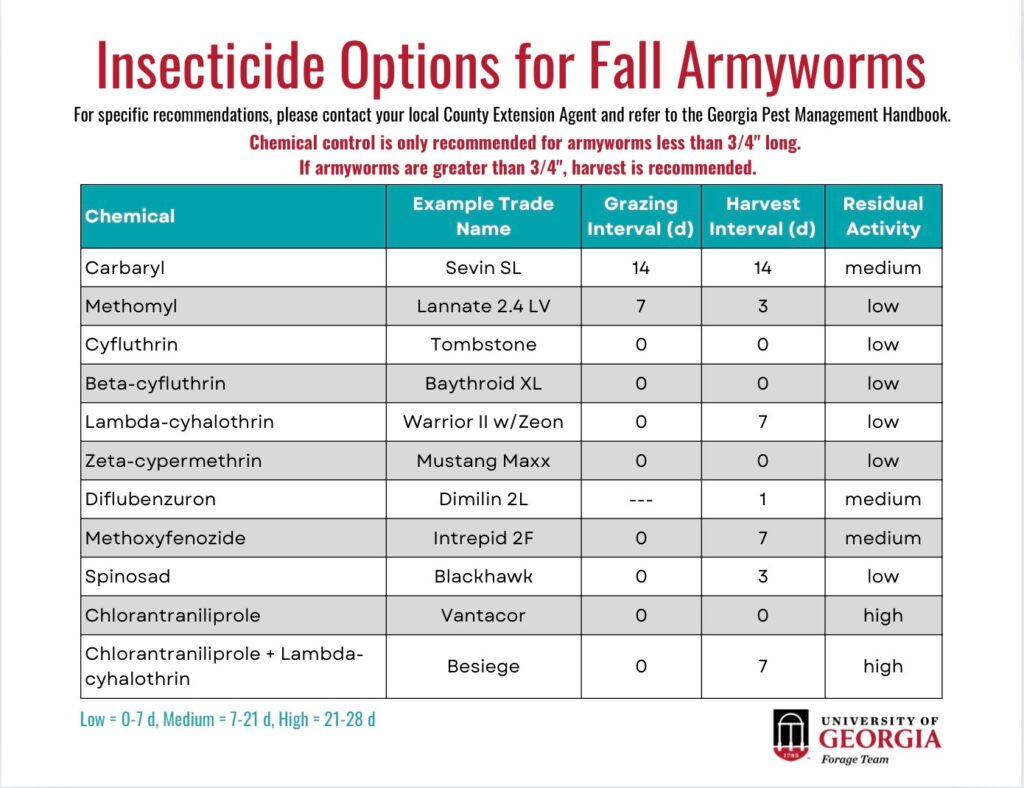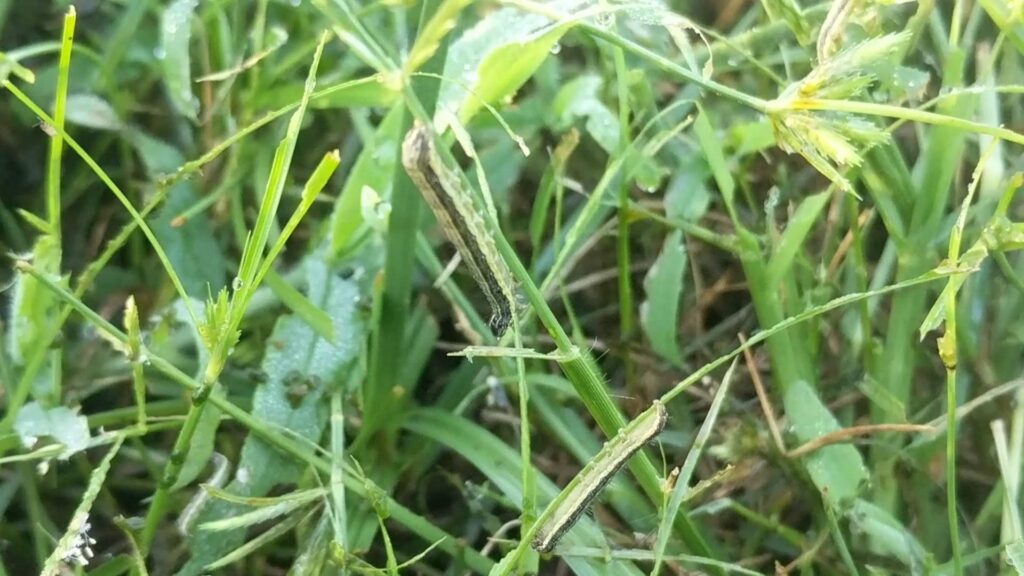
Fall armyworms (FAW) are one of the most devastating pests of forage crops in the Southeast, capable of wiping out an entire field seemingly overnight. Recent reports indicate a rapid increase in FAW activity across the region, so it’s critical for producers to begin monitoring their pastures and hayfields now before significant economic damage occurs.
Identification
Fall armyworms are the larvae of a moth and are most commonly identified in their fully grown stage. Mature larvae can reach up to 1.5 inches in length and range in color from green to nearly black. They are distinguished by light and dark horizontal stripes along the body and a noticeable inverted “Y” marking on their head. While smaller larvae tend to stay hidden in the canopy and do minimal feeding, the larger, mature worms are highly destructive.

Scouting for Fall Armyworms
The best defense against FAW is regular and careful scouting. Early morning and late afternoon are the most effective times to check fields, as fall armyworms are more active during cooler parts of the day. Using an insect sweep net can help identify low populations before they cause visible damage.
Producers should be on the lookout for:
- Ragged leaves or stripped stems
- Thin or brown patches in pastures (often mistaken for drought stress)
- Increased bird activity (though not always a reliable indicator)
Keep in mind that FAW often select the most well-maintained, high-quality forage first. In tall pastures or hayfields, infestations can leave behind only stems, destroying valuable forage yield.
Prevention and Treatment Thresholds
UGA Extension recommends treatment when populations reach three or more larvae per square foot. However, thresholds may need to be adjusted depending on forage value, drought stress, or field conditions. If hay is nearing harvest and fall armyworms are present in the mature stage, cutting may be the most economical control strategy.
Insecticide Use
When insecticide treatment is warranted, be sure to:
- Target smaller larvae (less than ¾ inch long) for the best results.
- Carefully follow all label directions.
- Observe all grazing and harvest restrictions.
Some products offer residual control to help protect against reinfestation. These vary in cost and duration of control, so it’s important to evaluate the return on investment for each product. Consult your local UGA Extension office for region-specific insecticide recommendations.
Don’t wait until you see brown patches—start scouting early and often. Proactive management is the key to protecting your forage investment from fall armyworm damage.